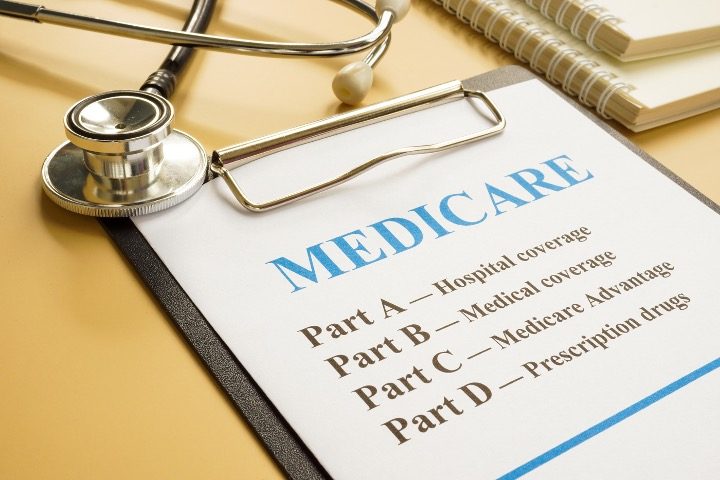
As a politician, what do you do if a law you passed is going to anger a large voting bloc right before an election? If you’re the Biden-Harris administration, you spend $10 billion or more of taxpayer dollars to conceal the problem until the votes have been counted.
The laughably misnamed Inflation Reduction Act (IRA) made major changes to Medicare Part D, which covers prescription drugs. (Americans can thank a Republican Congress and President George W. Bush for this monstrosity, which, at the time of its creation, constituted the largest new entitlement in nearly 40 years.) Those changes are driving Part D premiums through the roof, so the Centers for Medicare and Medicaid Services (CMS) have announced a three-year “premium stabilization” demonstration program just in time to prevent pre-election rate hikes.
That is especially important to Vice President Kamala Harris, the presumptive Democratic presidential nominee, because, according to CMS, about 67.3 million Americans were enrolled in Medicare as of April, with 80 percent covered by Part D. Senior citizens are the most reliable voters in the country. Seventy-two percent of them cast ballots in the 2020 presidential election, and Harris can’t afford to earn their ire.
Premium Peril
The most significant IRA modification to Part D is a $2,000-per-year cap on each beneficiary’s out-of-pocket costs. Once that cap is reached, private insurers must pick up 60 percent of all additional costs. Medicare and drug makers split the rest.
“The IRA’s provisions significantly increase insurers’ financial liabilities,” wrote Jackson Hammond, senior policy analyst with the healthcare-research group Paragon Health Institute. “What do insurers do when the costs of their plans go up? They raise premiums, of course.”
The average monthly-premium bid for a stand-alone Part D plan for 2025 ($179.45) is nearly triple that of 2024 ($64.28). Although taxpayers are forced to cover the lion’s share of Part D premiums, beneficiaries would still see their rates increase about 280 percent — something they would be unlikely either to forget or to forgive on election day.
Enter CMS’ “demonstration.” According to Hammond:
Fearing the premium increases that the IRA redesign will impose on Part D plans, CMS has now launched a new voluntary, nationwide demonstration program that is neither a demonstration nor voluntary. Unlike this massive subsidization scheme, demonstrations are supposed to be limited in nature and test alternative features of program design. As a result of the IRA changes, insurers that don’t participate are expected to either be uncompetitive from a price perspective or face significant losses — hardly a choice for insurers.
Deceptive Demonstration
The demonstration consists of three parts, which together “represent a massive transfer of taxpayer resources to insurers to compensate them by tamping down increases in Part D premiums,” argued Hammond.
First, it whacks $15 off the monthly base beneficiary premium for all participating plans, with taxpayers picking up the difference to the tune of $180 per beneficiary per year. “This portion of the demonstration alone would cost $7.2 billion over three years,” Hammond calculated.
Second, it prohibits total individual Part D premiums from rising more than $35 per year.
Third, it uses “risk corridors” to cut insurers’ losses at taxpayer expense. Explained Hammond:
Risk corridors in Part D are essentially caps on both profits and losses for plans. When a plan’s revenue rises a certain percentage above the expected target (reflected by the plan’s bid), the government takes a specified percentage of the profit. Similarly, when revenue is a certain percentage below the expected target, the government will cover some of the losses….
In the current risk corridor design, the rule of thumb is “as above, so below”: Medicare subsidizes losses below plans’ expected targets at the same levels it takes from profits above the expected targets. In the new demonstration, CMS will use risk corridors to significantly narrow any insurer losses. Now, taxpayers will assume more risk at lower levels of losses, while maintaining [Medicare’s] standard level of take on insurers’ profits. Essentially, insurers would get losses relieved sooner and to a greater extent than before, without any change to the profit side.
Ballot-box Bailout
All of this adds up to more than $10 billion in federal spending over three years. It also adds up to “an election-year bailout of insurers to avoid politically damaging premium increases in a vital program for seniors,” remarked Hammond.
Joe Grogan, an advisor to the president during the Trump administration, concurs.
“They’ve destroyed Part D premiums,” Grogan told Fox News Digital. “I’m not sure it’ll survive legal scrutiny if someone were to sue. Objectively, it shouldn’t be done. It’s just interjecting $5-$10 billion of taxpayer dollars, while the taxpayers are paying the price 85 days before an election. It’s sickening.”
Hammond, too, believes the CMS demonstration to be unlawful. Before the 2012 election, the Obama administration performed similar sleight of hand to mask ObamaCare’s Medicare alterations, spending an estimated $8.3 billion on a demonstration that, Hammond noted, “was more expensive than the previous 85 demonstrations combined.” It was also “denounced as illegal by the Government Accountability Office.”
But that didn’t stop President Barack Obama, and it is unlikely to stop his vice president — or the current one — either.
Concluded Hammond:
The Biden administration championed poor policy two years ago and now wants taxpayers to bail them and insurance companies out in an election year. So far, the only thing they’re demonstrating is how to whitewash failed policy by pillaging taxpayer dollars.




